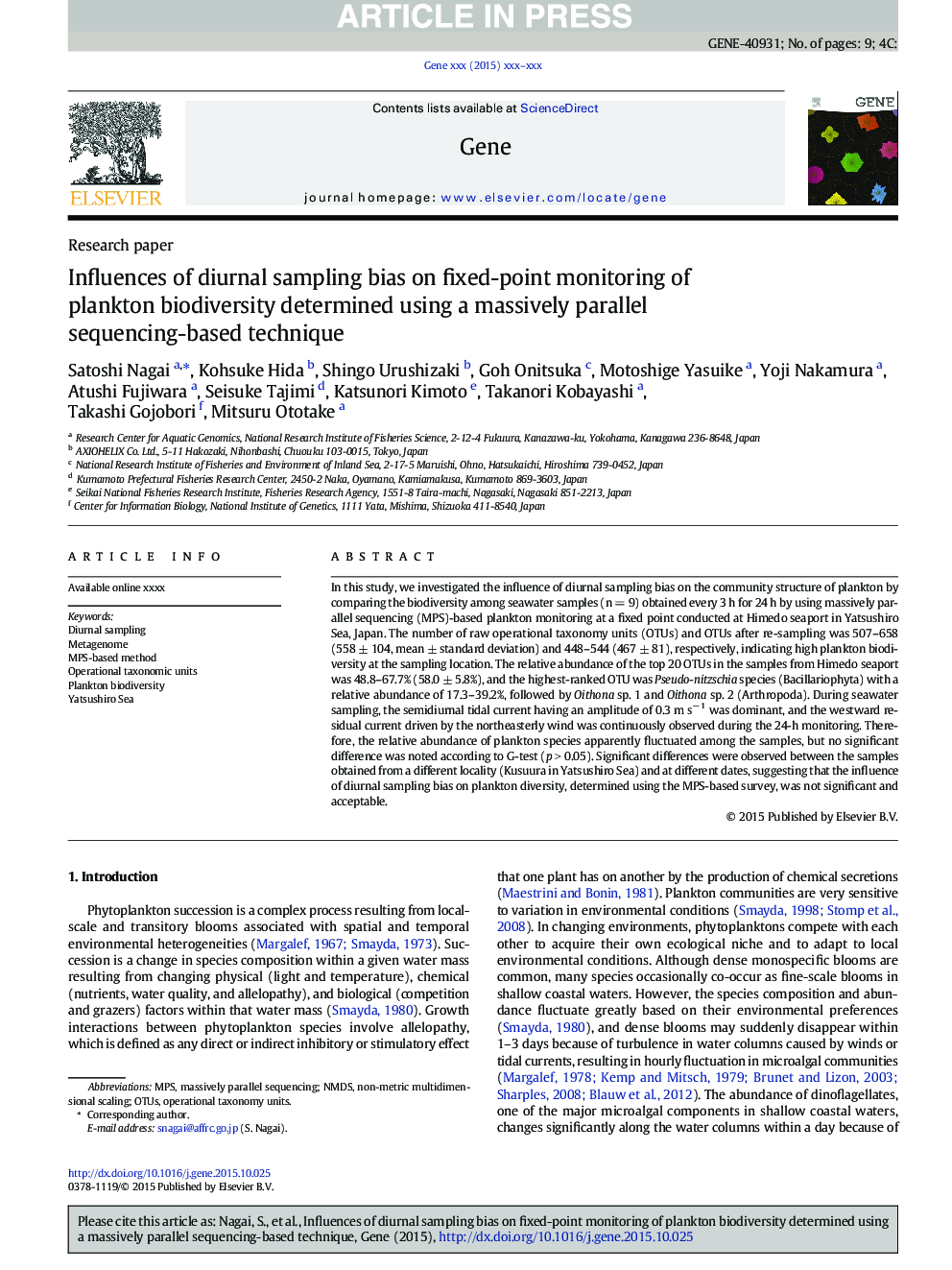| Article ID | Journal | Published Year | Pages | File Type |
|---|---|---|---|---|
| 5905181 | Gene | 2016 | 9 Pages |
Abstract
In this study, we investigated the influence of diurnal sampling bias on the community structure of plankton by comparing the biodiversity among seawater samples (n = 9) obtained every 3 h for 24 h by using massively parallel sequencing (MPS)-based plankton monitoring at a fixed point conducted at Himedo seaport in Yatsushiro Sea, Japan. The number of raw operational taxonomy units (OTUs) and OTUs after re-sampling was 507-658 (558 ± 104, mean ± standard deviation) and 448-544 (467 ± 81), respectively, indicating high plankton biodiversity at the sampling location. The relative abundance of the top 20 OTUs in the samples from Himedo seaport was 48.8-67.7% (58.0 ± 5.8%), and the highest-ranked OTU was Pseudo-nitzschia species (Bacillariophyta) with a relative abundance of 17.3-39.2%, followed by Oithona sp. 1 and Oithona sp. 2 (Arthropoda). During seawater sampling, the semidiurnal tidal current having an amplitude of 0.3 m sâ 1 was dominant, and the westward residual current driven by the northeasterly wind was continuously observed during the 24-h monitoring. Therefore, the relative abundance of plankton species apparently fluctuated among the samples, but no significant difference was noted according to G-test (p > 0.05). Significant differences were observed between the samples obtained from a different locality (Kusuura in Yatsushiro Sea) and at different dates, suggesting that the influence of diurnal sampling bias on plankton diversity, determined using the MPS-based survey, was not significant and acceptable.
Keywords
Related Topics
Life Sciences
Biochemistry, Genetics and Molecular Biology
Genetics
Authors
Satoshi Nagai, Kohsuke Hida, Shingo Urushizaki, Goh Onitsuka, Motoshige Yasuike, Yoji Nakamura, Atushi Fujiwara, Seisuke Tajimi, Katsunori Kimoto, Takanori Kobayashi, Takashi Gojobori, Mitsuru Ototake,
